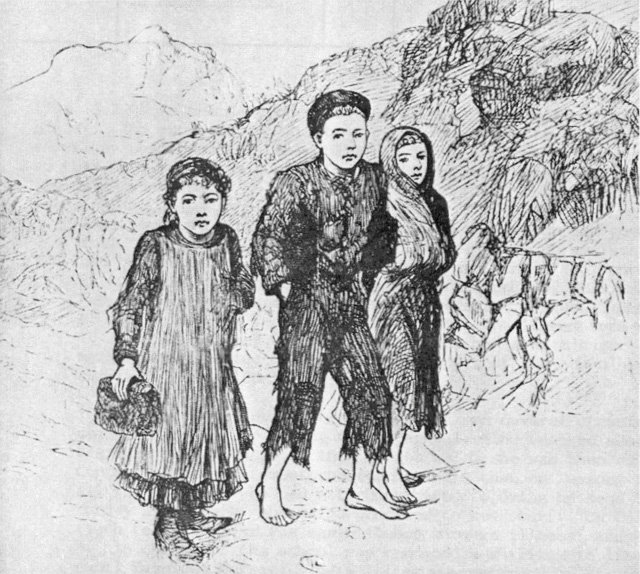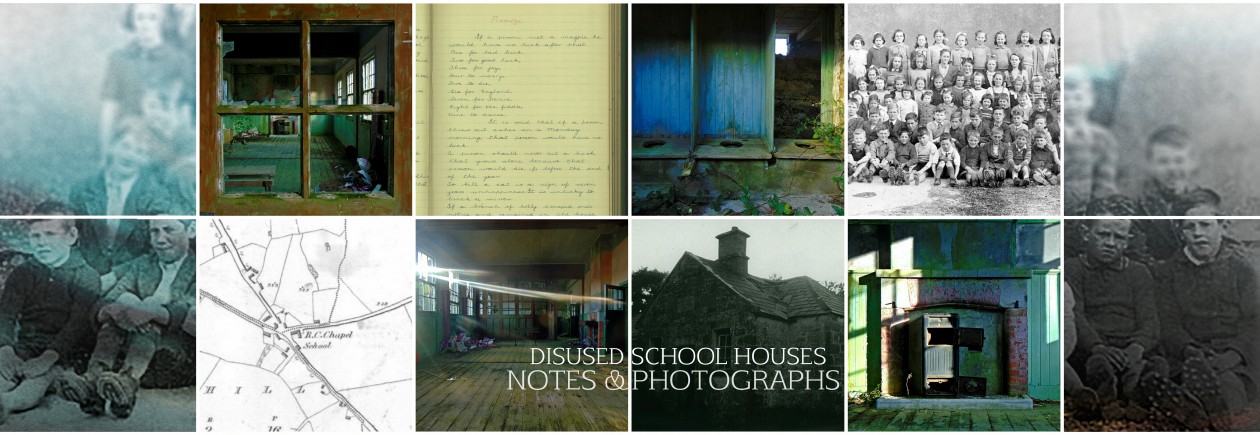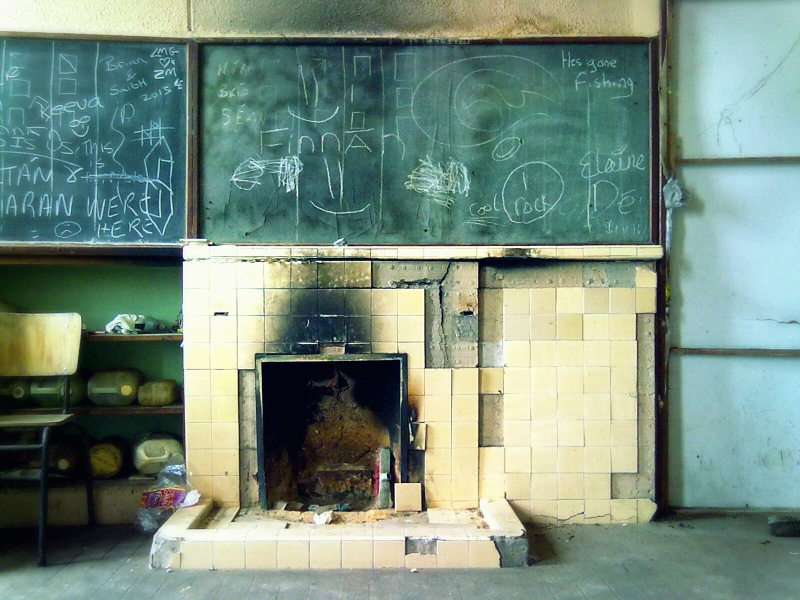
Even today with the wonders of central-heating, attending school through the cold winter months is a testing experience for many school children. Think back to what it must have been like before insulation, double glazing, and warm radiators were common place in the classroom. The fireplace is an almost ubiquitous feature in every school house built in Ireland through the 19th and into the first half of the 20th century. During this period, it was common for each classroom to have its own open fireplace to keep the classroom warm, though stoves could also be found in some schools.
As part of their contribution to the upkeep of the school, the parents of the school children were required to supply fuel through the winter months (in rural schools, this was typically peat turf) to heat the classroom as needed. Generally, the location of the fireplace at the head of the classroom meant that the teacher enjoyed the benefit of the warmth much more than the children. However, as a small comfort the fireplace was sometimes used to heat glass bottles of milk which each child often brought to school.
Very often, supplying turf for the school fire amounted to the school children carrying a sod or two of turf to school each morning in winter. In some cases, each family who had children attending the school had to provide one cart-load of turf each year. When this was used, each pupil had to bring further fuel each day until the weather improved. Turf was often stored in the porches where the children’s coats hung.
It is noted by many who recall the practice of bringing turf to school, that failure to supply the required fuel resulted in a caning, though officially children were not supposed to be caned for this. In 1911, government funding was made available to heat classrooms, though the practice of carrying sods of turf to school continues for several decades afterwards.
Each morning during winter, the fireplace was cleaned of the ashes from the previous day’s fire by the school children and the fire was then set. The style of the open fireplaces vary greatly from school to school though they are invariably located at the head of the classroom – be this at the gable end of the building or at an opposing central load-bearing wall which included a chimney stack. Some fireplaces included mantle-pieces, hearthstones and occasional decorative brickwork, though often the hearth comprised a basic masonry or brickwork construction with little embellishment.
School fireplaces were naturally smaller than their domestic equivalents as domestic fireplaces included cranes and space for food preparation in the home. The hearth wall itself was usually very deep and extended to the ceiling with the chimney stack protruding further above the roof. As a result of this, the chimney wall is often one of the best preserved features of abandoned school houses today.

Although the majority of the school buildings recorded in this blog are now physically empty or approaching a point of collapse, the physical structures are cognitive stimuli for many, and hold a wealth of memory and associations that shaped the understanding of the world around us for many people. It is striking that for so many people who attended these schools, one of the most lasting memories is supplying fuel for the school fire.
If you or someone you know attended one of these national schools, please do get in touch and share any stories, anecdotes, photographs, or any other memories you may have.





3 thoughts on “Keeping the classroom warm during the winter months”